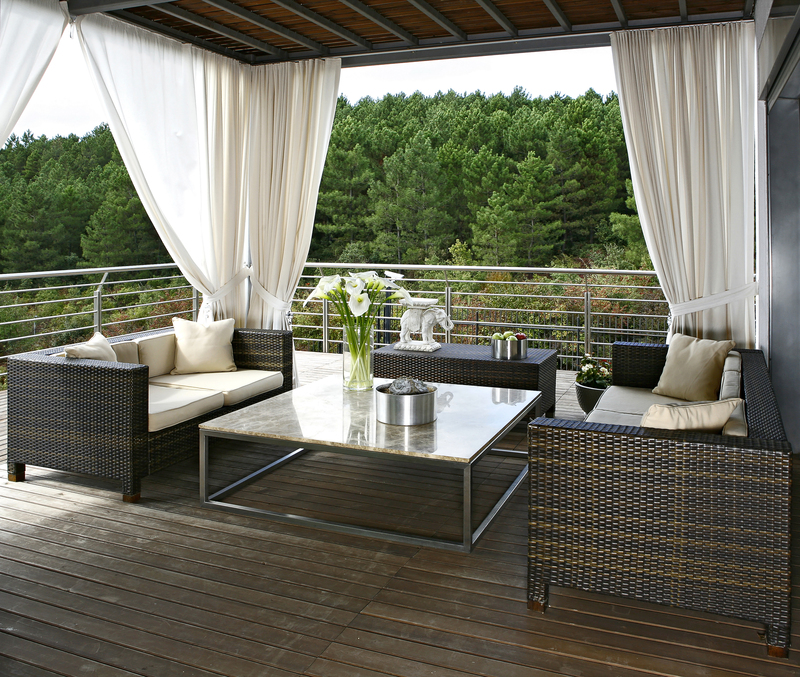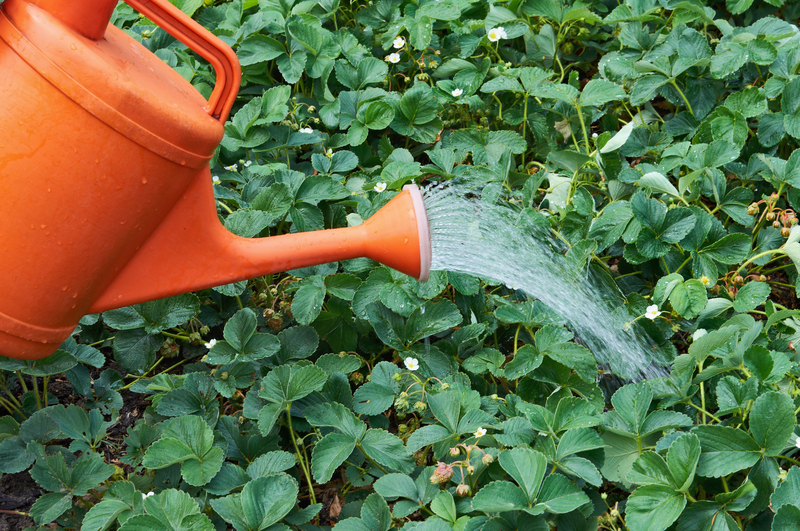Crafting a Playful Outdoor Space for Children
Posted on 16/06/2025
Crafting a Playful Outdoor Space for Children: A Comprehensive Guide
Encouraging your children to spend time outdoors is more important than ever in the digital age. Crafting a playful outdoor space for children provides not only fun and excitement but also promotes healthy development, creativity, and physical fitness. Whether you have a sprawling backyard or a compact yard, thoughtful outdoor play space design can transform any area into a haven for adventure and imagination.

Why Outdoor Play Spaces Matter for Kids
Outdoor play areas are more than just places to burn off energy--they are critical to child development. By creating a fun outdoor environment for children, you offer them opportunities to:
- Develop gross and fine motor skills
- Engage in imaginative and creative play
- Socialize with peers and learn cooperation
- Gain confidence and independence
- Connect with nature and the outdoors
- Improve emotional well-being
Research consistently shows that children who spend time outdoors are happier, healthier, and more confident. Investing in a child-friendly outdoor space is an investment in their overall well-being.
Planning Your Playful Outdoor Space
Assessing Your Available Space
Before breaking ground, take a close look at your outdoor area. Crafting a play-friendly backyard can be accomplished no matter the size or layout--you simply need to maximize what's available.
- Measure the dimensions: Know your exact space to plan appropriately.
- Identify natural features: Trees, slopes, or rocks can become part of your play design.
- Check for potential hazards: Remove sharp objects, poisonous plants, or other dangers.
Understanding Your Children's Needs
Every child is unique. Consider their age, preferences, and abilities. Younger children may require safer, simpler activities, while older kids may love adventurous challenges. Ask your children for input--after all, they're the main users!
Elements of a Playful Outdoor Space for Children
A truly engaging children's outdoor play area combines different elements to stimulate all forms of play. These can be structured (play equipment, sports areas) or unstructured (open lawns, natural spaces).
Main Zones to Include
- Active Play Zone: For physical activities like swinging, climbing, sliding, and running.
- Creative Play Zone: Spaces for sand, water, art, and imaginative play.
- Nature Zone: A spot to explore plants, insects, and sensory experiences.
- Quiet Retreat: A cozy nook for reading, resting, or calming sensory input.
Active Play Structures
Incorporating playground equipment is the heart of most playful outdoor environments for kids. Safety and age-appropriateness should always guide your choices.
- Swings and Slides: Timeless favorites for all ages, from classic belt swings to toddler bucket seats and wavy slides.
- Climbing Equipment: Monkey bars, rock walls, rope ladders, or even a treehouse encourage strength and coordination.
- Bouncing Features: Trampolines or balance beams develop balance and agility but require supervision.
- Obstacle Courses: Use tires, logs, or custom equipment to create a challenging trail.
Creative and Imaginative Zones
Cultivating a space for imaginative play helps children invent their own games and stories.
- Sandpits and Water Tables: Classic features for digging, pouring, and sensory play.
- Outdoor Art Stations: A weatherproof chalkboard, easel, or mural wall inspires creativity.
- Playhouses and Tents: Small "homes" or forts spark role-play and dramatic activities.
- Mud Kitchens: Old pots, pans, and a work surface allow kids to "cook" with nature.
Exploring Nature-Based Play
Connecting with nature is essential for healthy childhood development. Designing a child-friendly garden or outdoor nature spot can be as simple as designating an area for:
- Bug hotels or butterfly gardens
- Raised beds where children can plant and care for flowers or vegetables
- Logs and rocks for balance and bug-hunting
- Sensory paths made from different natural materials--wood chips, sand, pebbles, or grass
Creating Quiet Corners
Children sometimes need calm spaces to unwind, read, or rest. Adding a cozy nook, a hammock, or a shady bench surrounded by soft plants can create the perfect retreat.
Safety First: Key Considerations
No matter how inviting your outdoor play area for kids is, safety should always be paramount.
- Soft Surfaces: Install shock-absorbing materials like rubber mulch, wood chips, or artificial turf under play structures.
- Supervision: Ensure you can always have line-of-sight to your children, or install a baby monitor or camera if needed.
- Age-appropriateness: Choose equipment that matches your child's development stage.
- Secure Fencing: Enclose the area, especially for younger children and pets.
- Sun Protection: Use shade sails, trees, or structures to shield play areas from harsh sun.
- Water Safety: Cover ponds or pools and ensure water tables are emptied after play for younger kids.
Creative Tips to Maximize Play and Learning
Design for Flexibility
As children grow, their interests change. Building a versatile outdoor environment for kids allows you to adapt the space over time.
- Use movable furniture and modular play structures.
- Leave open areas for new activities as needs evolve.
- Allow for temporary installations, like soccer nets or tents.
Stimulate All the Senses
Children learn by using all their senses. Incorporate:
- Colorful plants or surfaces for visual stimulation
- Textured materials like pebbles, grass, sand, and bark for tactile experiences
- Wind chimes or water features for auditory variety
- Herbs and flowers for pleasant scents
Encourage Imaginative Play
The best innovative outdoor spaces for children inspire invention and creativity. Add elements with multiple uses:
- Loose parts like sticks, stones, and buckets for open-ended play
- Chalkboards or murals for art and games
- Simple costumes or props for roleplaying
Incorporate Learning Opportunities
Outdoor spaces can be educational. Try:
- Gardening areas for lessons in plant biology and responsibility
- Weather stations or sundials for science experiments
- Simple math games painted onto patios or paths
Budget-Friendly Outdoor Play Space Ideas
You don't have to break the bank to design a fun and functional backyard play space for children. Many elements can be made yourself or repurposed from everyday materials.
DIY Play Projects
- Pallet Playhouses: Recycle wooden pallets into forts, mud kitchens, or climbing frames.
- Homemade Swings: Use sturdy rope and an old tire or board for a simple swing.
- Garden Path Mazes: Lay out stepping stones or bricks for a mini maze or hopscotch game.
- Repurposed Tires: Paint and stack for climbing, rolling, or as planters.
Recycled Art and Building Materials
Create art stations stocked with old paper, cardboard, and eco-friendly paints. Use logs, branches, rocks, and shells to inspire nature crafts or build miniature fairy gardens.
Community Collaboration
Consider reaching out to neighbors or local groups to fund a community play area, or organize swap days for gently used toys and play equipment.
Maintaining and Evolving the Play Space
A well-maintained outdoor space for children ensures safety and fun year-round.
- Inspect regularly: Check for loose fittings, worn-out surfaces, or hazards.
- Update features: Replace or upgrade equipment as children grow.
- Seasonal adjustments: Add shade in summer, windbreaks for winter, or waterproof storage for toys.
- Involve children: Teach them responsibility by including them in tidying and caring for the garden or play area.

Inspiration: Examples of Playful Outdoor Spaces
Need ideas to kickstart your design? Here are some highlights from successful outdoor play space projects for kids:
- The Adventure Garden: Incorporates winding paths, hidden nooks, secret doors, and nature trails for endless exploring.
- The Sensory Oasis: Features a mini waterfall, stepping stone paths, aromatic herbs, and musical play panels.
- Imagination Station: Combines a customized playhouse, art wall, and costume corner for dress-up and roleplay.
- The Active Arena: Includes a mini climbing wall, balance course, trampoline, and a sports setup for running, jumping, and teamwork.
Conclusion: Creating Your Dream Playful Outdoor Space
Crafting a playful outdoor space for children is about more than just playground equipment--it is about fostering exploration, creativity, and joy. Whether you're envisioning a backyard wonderland, a sensory retreat, or a natural discovery zone, your efforts will nurture healthy, happy, and imaginative kids.
Ready to get started? Involve your children in the process and watch as their ideas and excitement shape your outdoor oasis. With thoughtful planning, a dash of creativity, and loads of love, you'll create cherished childhood memories right outside your door.
Helpful Resources:
- National Wildlife Federation - Nature Play Spaces: Visit Website
- National Recreation and Park Association: Read More
- DIY Play Space Tutorials: Get Inspired
Let your imagination--and your child's--run wild as you craft a joyful outdoor world that delights, teaches, and inspires!

